Most of the food we eat at our place is hyper-local; grown within an hour’s drive of our farm.
We’re very lucky to have land to grow our own food. We also live in a bit of a ‘food bowl’, so we have access to an incredible array of local food.
But it also comes down to choices. A few years ago we decided to prioritise eating food that’s grown as close to home as possible.
Related Articles
How to avoid depressing mistakes with your fruit trees
Creating an Action Plan for your fruit trees can help you avoid depressing mistakes, and feel more relaxed about your garden.
What are those brown marks on my apples?
Brown marks on your apples can be a sign that something’s wrong, or it can be a naturally occurring condition that’s rarely seen these days.
How to make and use a fruit picking diary
Using a fruit-picking diary can help solve the problem of choosing the exact time to pick your fruit so it’s neither under-ripe nor over-ripe.
In some ways, eating locally grown food can be less convenient than ordering all your food online and having it delivered.
Depending on what you eat and your level of access to home-grown food, eating local can also be more expensive.
But that’s not a given, and anyway – should you always aim to eat the cheapest possible food?
What a “local” diet means to us
We don’t buy much fruit (no surprises there). We do buy small amounts of stuff we can’t grow like bananas and the occasional irresistible mango or custard apple.
Our veggies come from a few sources, mainly what we grow ourselves in the house garden. Plus Katie’s dad has always had the tendency to bung in a veggie plant to fill any gaps in the rows in Carr’s Organic Fruit Tree Nursery (our on-farm nursery).
We’re also lucky to have access to world-class locally grown veggies through our local markets.
Our freezers are full of lamb (from Katie’s sister’s farm), pork from our neighbours just up the road, and chicken and beef from our own farm.
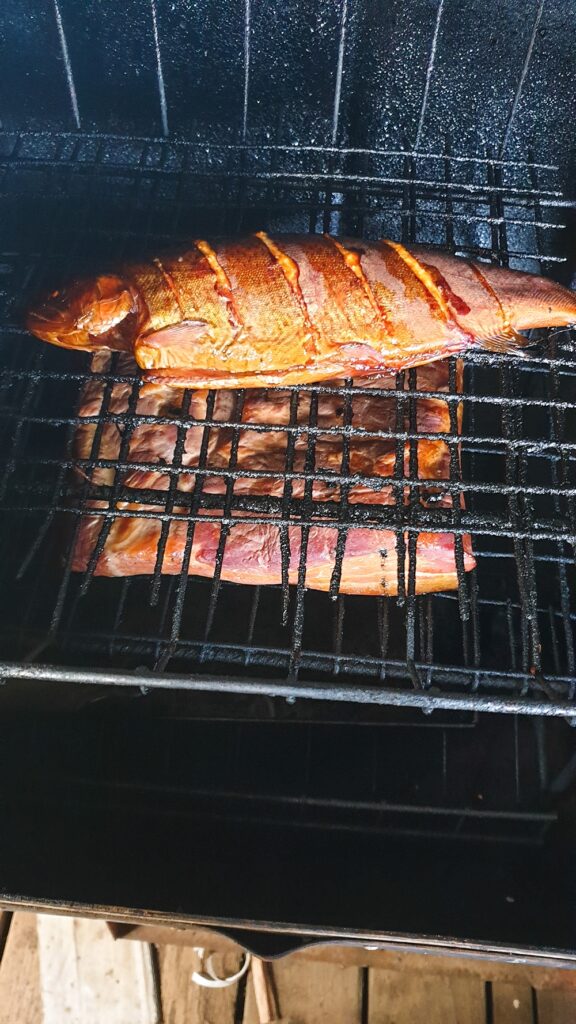
Hugh has taken up smoking (in a good way!) and built a smoker. That means we enjoy our own home-cured and smoked bacon (using meat from the pork-growing neighbour). He also smokes the occasional fish for a fancy treat.
Milk comes from the on-farm Sellar Dairy (and Hugh makes yoghurt with it as well).
Grains, honey, cheese, wine, and olive oil all come from local farms via the farmers market. We harvest our own eggs, olives, almonds, berries, and citrus from the garden. Our pantry is full of homemade preserves.
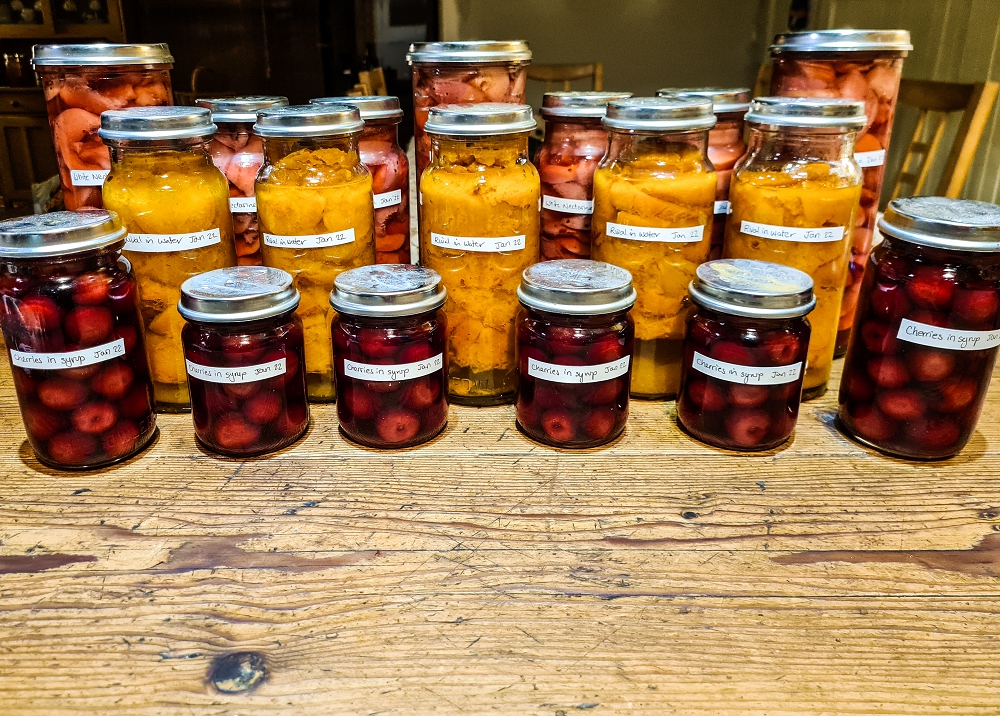
The food we can’t produce locally
In short, there’s not much food we have to buy that travels any great distance. Coffee, tea, sugar, and corn chips mainly. (And yes, chocolate.)
We struggle to spend more than $100 a week on groceries (not counting treats and eating out:)) while eating an almost exclusively local, organic diet.
We don’t do this because we’re particularly faddist about our food. It’s because we make it a priority to grow as much of our food as we can, and to access what we can’t grow as locally as possible.
We’re also devoted to shopping at farmers’ markets!
Why isn’t everyone eating local?
Now and then we go into the supermarket, where we see aisles full of processed food, much of it imported. We remember with a sinking heart that most people still buy almost all their food there.
Most of the food in supermarkets has taken massive amounts of fossil fuel to grow, process, and transport. In her book, Animal, Vegetable, Miracle, Barbara Kingsolver estimates that if every US citizen ate just one meal a week of local and organic food, the US could reduce its oil consumption by over 1.1 million barrels per week. Australia is not the US of course, but our supply chains work the same way.
At an agribusiness event, we once heard a representative from one of the big supermarkets saying that “we are in the business of giving people what they want”. She meant that if customers want cherries in June, they’ll give them cherries in June, even if they have to import them.
Excellent customer service, without a doubt. But are supermarkets actually doing us a disservice?
Is being able to get cherries all year just disconnecting us completely from the seasonality that is intrinsic to food production?
Is cheap food the best food?
Deciding to eat an almost totally organic diet can look – at first glance – to be an incredibly privileged decision. But that’s because food is usually judged just on price, and not on quality.
A lot of the cheap food available on supermarket shelves is quite low in nutrient value. It might be cheaper per calorie, but is it cheaper per nutrient value?
And to follow the argument even further, imagine that we routinely factored in the consequences of eating a diet that’s high in calories but low in nutrients.
Putting the lens of nutrient density on food choices completely changes the equation. Fruit and veg can seem relatively expensive compared to processed food, but per nutrient, they actually work out much cheaper.

Reconnecting eaters to real food
As fruit-growing educators, a big part of what we do is reinstate knowledge about food and seasonality that has been lost. Just in the last generation or two, food seasonality is no longer common knowledge.
We’ve mentored The Orchard Keepers (and before them Tellurian Fruit Gardens) to learn how to grow and sell fruit on our farm. We’ve encouraged them to sell everything by named variety. That way, the customer connects with the fact that each variety comes and goes within just a few weeks.
This is often new information for consumers, and also for people who are new to growing their own fruit. Everyone is used to the fact that you can buy apples all year. So it comes as a surprise that Gala apples (for example) are actually only available off the tree for a few weeks.
This is a subtle way to reconnect people with what “local food” actually means. We hope that by being connected with it, they’ll value it.
Home-grown is the best local food
The best food – for your family and the planet – is the food you grow yourself. Helping people recover the lost skills of food growing, is pretty much why we do what we do.
The number of people who desire to grow their own food seems to be steadily growing. We’re watching (and encouraging) this trend with deep delight.
In our experience, most people have the capacity to grow at least some of their own fruit and veg if they get the right support. (Inexplicably, there are still some people who are not interested, but we’re working on that!).
However, it’s just not realistic for a lot of urban-dwellers to totally feed themselves. And if you’re not blessed with the privilege of living on a farm, growing your own protein can be tricky.
What’s so good about local food?
We reckon it’s incredibly important to support your local farmers. By “support” we mean seek out and buy from. But if it’s less convenient, and might cost a bit more, then why would you do it?
- It reduces the amount of fossil fuel used to produce your food, helping to combat climate change
- It keeps farmland in production and helps rural communities stay alive
- Food with a short supply chain is more likely to be grown in a regenerative way. That means you’ll be eating food grown with fewer pesticides and herbicides
- Local food networks create more resilient communities
- Buying direct from the farmer cuts out the “middle man” and keeps prices more reasonable
- The cost of local food usually realistically reflects the actual cost of food growing.
That’s where accredited farmers’ markets come in. They’ve taken the hard work out of trying to figure out what “local” means. If you’re buying at an accredited market, you can be sure the food you’ll be eating is both local and seasonal.
And there are other ways of buying directly from farmers. Community Supported Agriculture (CSA) is a brilliant and rapidly expanding way of connecting directly with farmers. Try searching in your browser or in the socials for farms near you that are offering a CSA. Also, try the Open Food Network, or check out farmers’ markets in your districts for their lists of farmers.
Imagine a world where every backyard is full of produce. Where every community has a weekly farmers’ market. And where everyone remembers that you can’t eat cherries in June, and they buy pears instead.
This blog first appeared as part of Katie’s 2015 RIRDC Victorian Rural Women’s Award. The project was called “Farmers Markets Building Communities” and was made possible by the Rural Industries Research and Development Corporation (RIRDC) Rural Women’s Awards.
Related Articles
How to avoid depressing mistakes with your fruit trees
Creating an Action Plan for your fruit trees can help you avoid depressing mistakes, and feel more relaxed about your garden.
What are those brown marks on my apples?
Brown marks on your apples can be a sign that something’s wrong, or it can be a naturally occurring condition that’s rarely seen these days.
How to make and use a fruit picking diary
Using a fruit-picking diary can help solve the problem of choosing the exact time to pick your fruit so it’s neither under-ripe nor over-ripe.


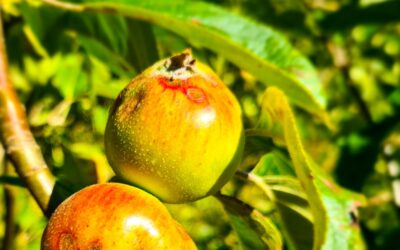
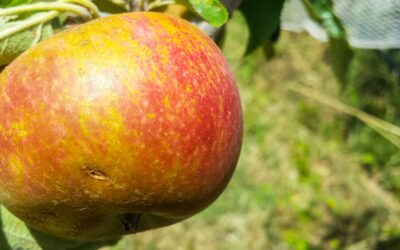
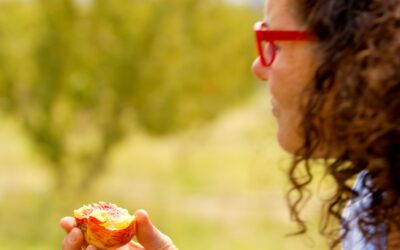


I enjoy reading an article that will make men and women think.
Also, many thanks for allowing me to comment!
Thanks for the feedback, glad you enjoyed the post